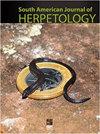Optimizing Studies of Phagocytic Activity by Flowsight Cytometry in Amphibians
IF 0.7
4区 生物学
Q4 ZOOLOGY
引用次数: 2
Abstract
Abstract. Phagocytosis is a primary and highly conserved mechanism for clearing the extracellular milieu from pathogens and debris. In amphibians, the lack of antibodies for characterizing the different phenotypes of phagocytic cells has impaired the study of the phagocytic process. We used conventional and flowsight cytometry to determine immune cells' phagocytic activity from the blood and peritoneum of toads by in vitro and in vivo assays. Macrophage-like and neutrophil-like cells were clustered and analyzed according to cell morphology and the number of internalized zymosan particles by flowsight cytometry. We identified peritoneal and blood phagocytes (macrophage-like/monocyte-like and neutrophil-like) and lymphocyte-like cells. Besides, we observed monocyte-like/macrophage-like and neutrophil-like cells engulfing up to seven zymosan particles. Assessing the phagocytic activity from blood and peritoneal phagocytes using in vitro and in vivo assays brings better insights into phagocytosis in amphibian immune cells from distinct body compartments and approaches. Moreover, it is worth highlighting the importance of morphologically identifying the cells and evaluating the number of internalized particles by flowsight cytometry, a valuable asset to further explore phagocytosis and other cellular processes in amphibians under field and laboratory conditions.流式细胞术优化两栖动物吞噬活性研究
摘要吞噬作用是清除细胞外环境中病原体和碎片的主要且高度保守的机制。在两栖动物中,缺乏用于表征吞噬细胞不同表型的抗体,损害了对吞噬过程的研究。我们使用常规和流式细胞仪通过体外和体内测定来测定蟾蜍血液和腹膜中免疫细胞的吞噬活性。根据细胞形态和内化酵母多糖颗粒的数量,通过流式细胞仪对巨噬细胞样和中性粒细胞样细胞进行聚类和分析。我们鉴定了腹膜和血液吞噬细胞(巨噬细胞样/单核细胞样和中性粒细胞样)和淋巴细胞样细胞。此外,我们观察到单核细胞样/巨噬细胞样和中性粒细胞样细胞吞噬多达7个酵母多糖颗粒。使用体外和体内分析评估血液和腹膜吞噬细胞的吞噬活性,可以从不同的身体分区和方法更好地了解两栖动物免疫细胞的吞噬作用。此外,值得强调的是,通过流式细胞术对细胞进行形态学鉴定和评估内化颗粒数量的重要性,这是在野外和实验室条件下进一步探索两栖动物吞噬作用和其他细胞过程的宝贵资产。
本文章由计算机程序翻译,如有差异,请以英文原文为准。
求助全文
约1分钟内获得全文
求助全文
来源期刊
CiteScore
1.50
自引率
0.00%
发文量
10
期刊介绍:
The South American Journal of Herpetology (SAJH) is an international journal published by the Brazilian Society of Herpetology that aims to provide an effective medium of communication for the international herpetological community. SAJH publishes peer-reviewed original contributions on all subjects related to the biology of amphibians and reptiles, including descriptive, comparative, inferential, and experimental studies and taxa from anywhere in the world, as well as theoretical studies that explore principles and methods.

 求助内容:
求助内容: 应助结果提醒方式:
应助结果提醒方式:


